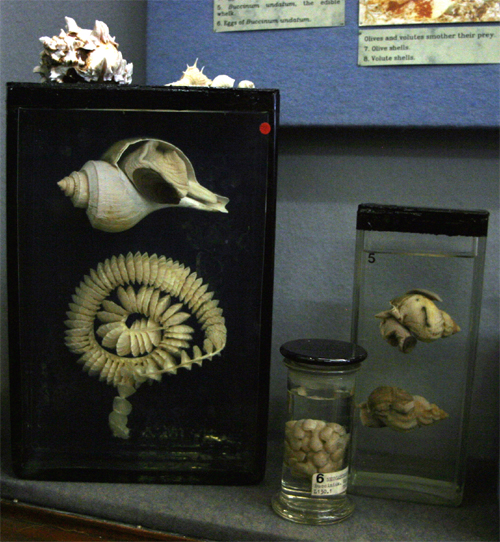
ORDER NEOGASTROPODA | |
Whelks, cones and tritons are mainly deposit feeders or predators. They all have a well-developed siphon for detecting prey. The siphon is often supported by a special groove in the shell. Neogastropods have an operculum. Their shells are not lined with mother of pearl. The larger bottom-dwelling carnivores belonging to this group commonly feed on bivalve molluscs, other gastropods, sea urchins, polychaete worms or even fish. Many burrow into sand to reach their prey. WhelksWhelks are predators and scavengers. Large ones feed on bivalves. A whelk grips its prey with its foot and then uses the edge of its own shell to wedge the prey’s shells apart.
ConesCones feed on polychaete worms and fish. Their radular teeth are long and barbed. They can be detached and shot into the prey like a harpoon, armed with a powerful nerve poison. Cones are the most poisonous shells in the world. The bite of some Pacific species can kill a man.
|
 |
 | |






